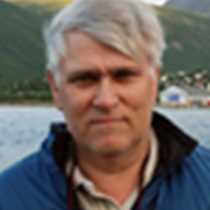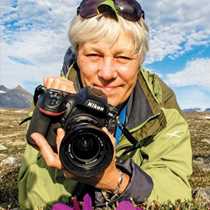After our first encounter with Antarctica, yesterday, we continued well into twilight and but not too much into night, through Antarctic Sound towards the Weddell Sea. As the early morning wakeup call came through we were on the northeastern side of the Antarctic Peninsula, Brown Bluff. The body of water north of the tip of the peninsula was first explored by the Swedish Antarctic Expedition in 1902, with the ship named Antarctic, hence the name.
Soon we were ashore to enjoy the true Antarctic penguin adapted to the cold, Adélie penguins, and some had already newly hatched chicks. Of course the skuas, as always, were patrolling over the colony. Nature is cruel and some of these chicks, into which the adult Adélie has put in so much energy, ended up as food for the skuas. At least they keep the penguins sharp and alert. Also here we encountered colonies with gentoo penguins and in between all penguins, the clean up patrol, the chicken-like snowy sheathbills strolled around to pick up any leftovers by the penguins. Further up the steep cliff faces, snow and cape petrels soared. Some guests on shore grabbed the opportunity for a glacier hike to explore the snow and ice.
Some went out on a Zodiac cruise, in between plenty of grounded ice floes, all sea-ice drifted north from the Weddell Sea and pushed into the bay by the wind. On some ice floes plenty of Adélie penguins roosted.
Back aboard for lunch and we lifted the anchor and set sail further east. Active Sound was our aim but the high winds over the night had filled the strait with plenty of drifting sea ice. As we got closer to Dundee Island, we saw in the distance the Argentinean base Petrel Station. Nearby is a flat area, which was used by the American Lincoln Ellsworth to take off for his trans-polar flight in 1935, being the first to fly between the Peninsula and the Ross Sea, his third attempt.
Soon we realized the ice blocked any possibility to get into Active Sound or continue east through Antarctic Sound, and we set our course west. Through the Antarctic Sound, rounding the northern tip of the peninsula we watched grand tabular icebergs, which come from the Weddell Sea driven by a westerly going current but against a westerly wind they sometimes creating a wake. We aimed to take a closer look on one “monster,” only about 3/4 of a mile long but before we arrived, killer whales were spotted and our course was diverted.
A pod of more than 20-25 type B killer whales did a great show in front of the ship, but our killer whale scientists were not able to go out in boats for any tagging. It was just too windy, but at least we all were able to enjoy being in the company of the largest top predator living on the planet. John Durham and Holly Fearnbach were just about to give their presentation about the research program as the whales were spotted. Better introductions to killer whales are hard to get.
After dinner along the western side of the peninsula, the wind abated and we enjoyed stunning scenery; flat calm seas, icebergs, and snow-covered mountains. For sure, an expedition at its best, and only our second day in Antarctica with still more to come.









